Having got my hands on some of the production (I think) models for the LOAD Kickstarter, I thought I’d put up some more pics of UniCast in action before it finished.
LOAD is a full game using UniCast to make dozens of models. They’ve been designed with this material in mind, so they make the best use of its ability to largely ignore things like undercuts. They’re nicely three-dimensional, and highly detailed.
Rather than tell you what you can see for yourself, I’ll just show some pics and keep my comments to a minimum. On the whole, it’s more of what I’ve already discussed in previous posts: models with loads of detail in poses you couldn’t possibly cast in one piece in any other medium. Most pics should click to enlarge.
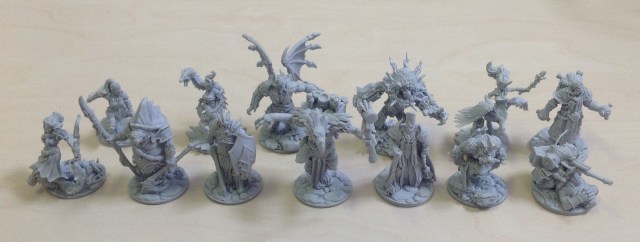
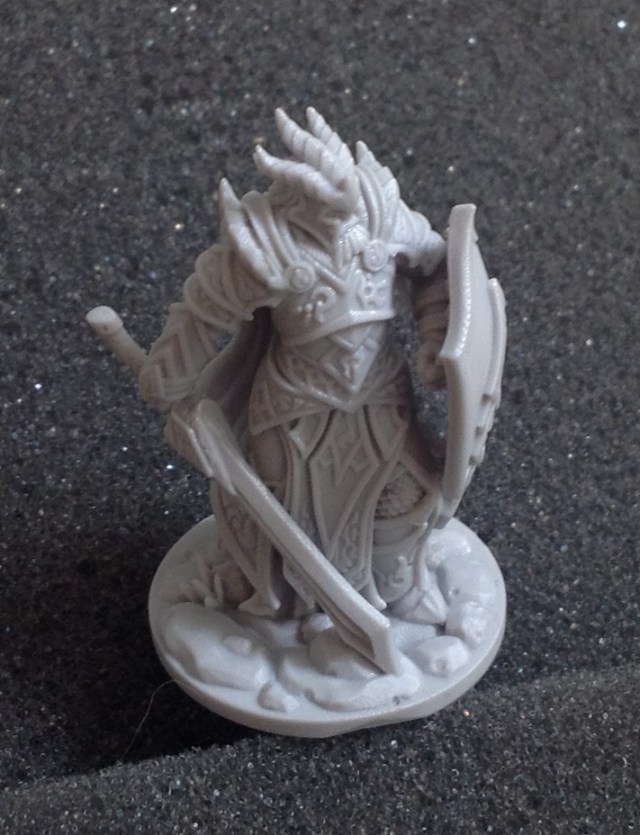
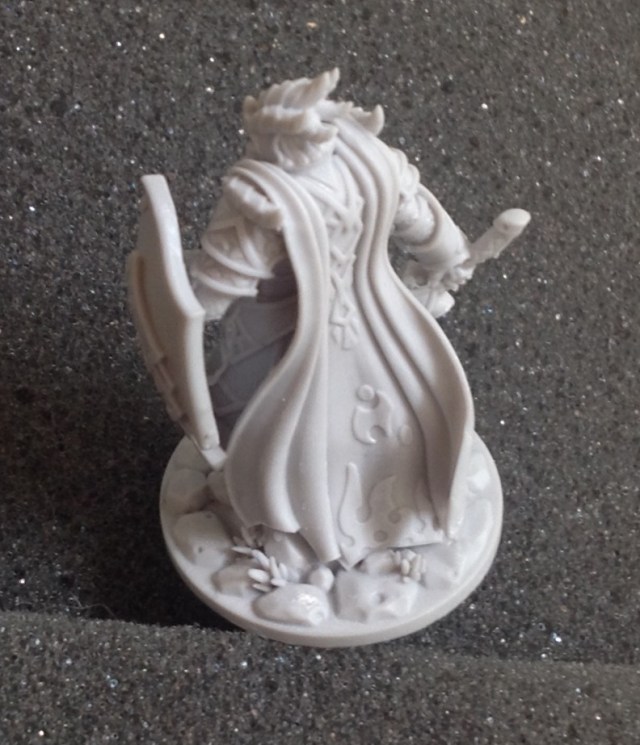

Note the tiny fishing pole among the baggage, above 🙂
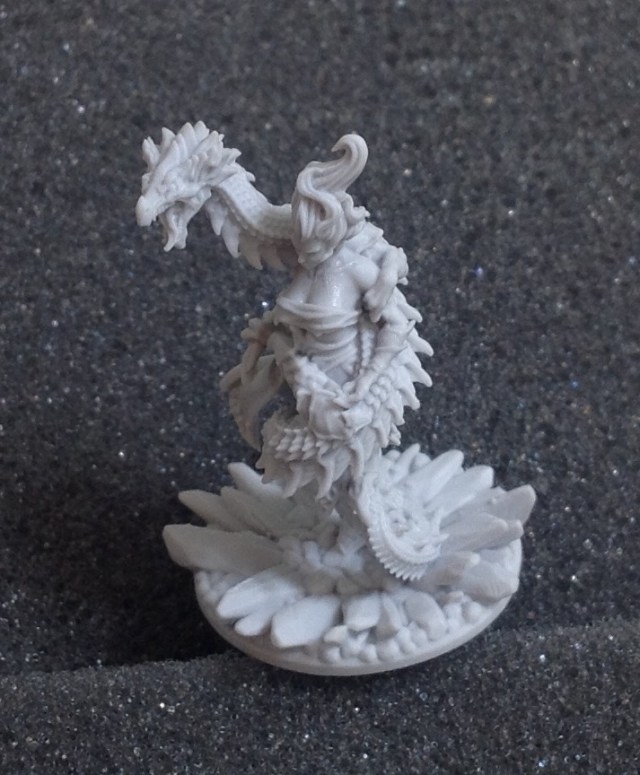
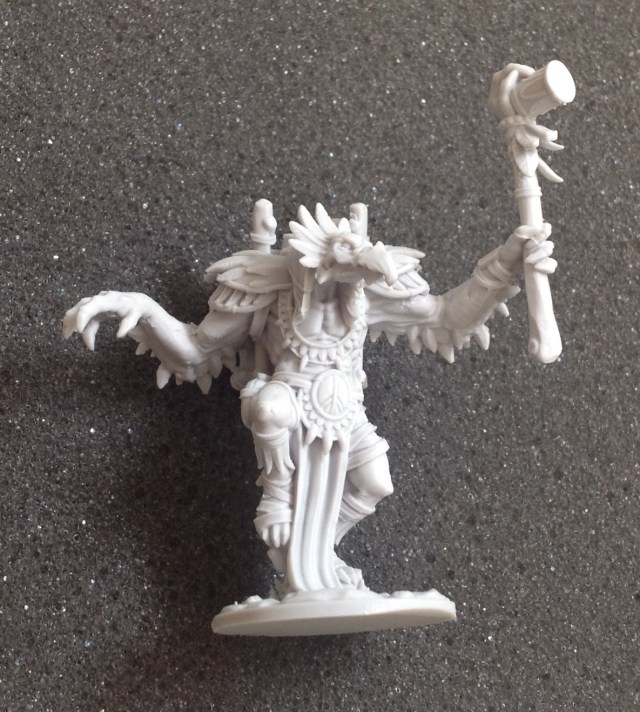

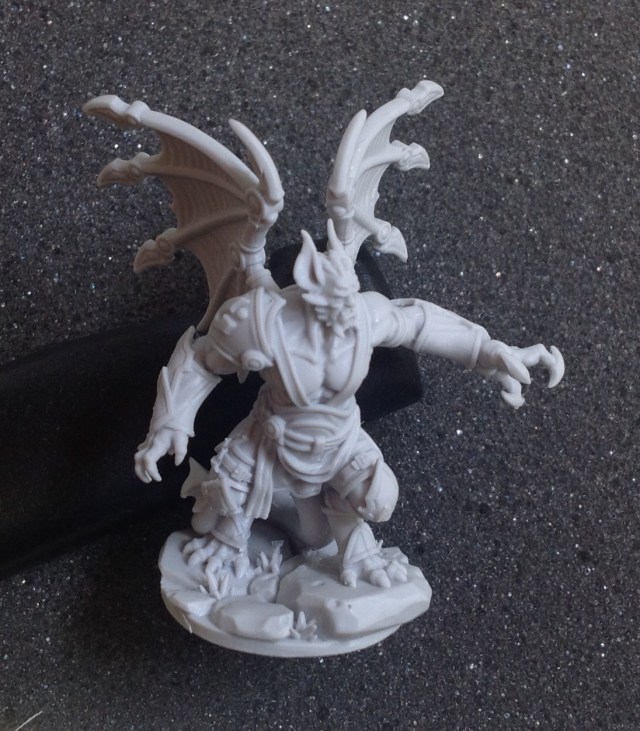
 How?
How?
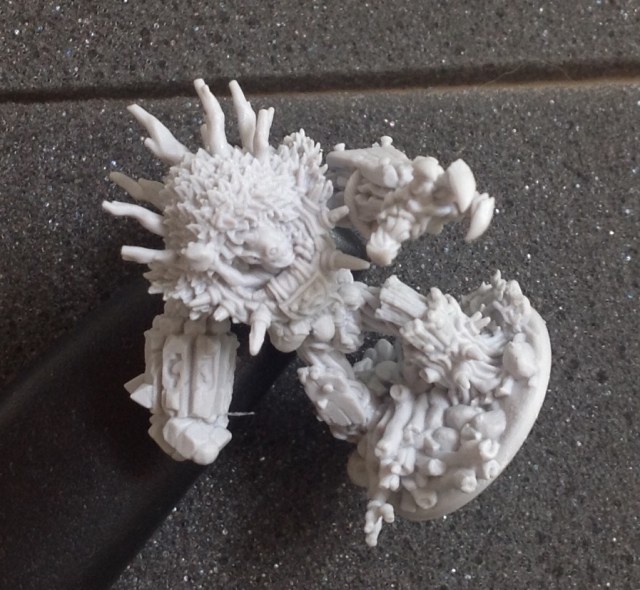 One thing which differs between these LOAD figures and the previous UniCast models I’ve seen is the level of detail on the bases. I’ve picked an extreme example here, but many of the models have tufts of grass modelled on. And I don’t mean a texture on the base, I mean blades of grass sticking up. You can see these on the “demon” and the “foot knight” above. The tree-thing model above has stuff sticking out in every direction, and is still a single piece.
One thing which differs between these LOAD figures and the previous UniCast models I’ve seen is the level of detail on the bases. I’ve picked an extreme example here, but many of the models have tufts of grass modelled on. And I don’t mean a texture on the base, I mean blades of grass sticking up. You can see these on the “demon” and the “foot knight” above. The tree-thing model above has stuff sticking out in every direction, and is still a single piece.
The German site brueckenkopf has loads more pics and a nice review (in German) of this set of figures. They agree about the process being impressive overall, though they do flag up mould alignment as a potential issue. I have to say I’m not very concerned myself. Looking at their pictures and the samples I was sent, there are indeed a few models with imperfect alignment (see the pics below). However, we’re talking fractions of a millimetre here, and nothing I haven’t seen in metal, plastic, resin, restic, HIPS, etc – in fact, anything that is produced in multi-part moulds. It’s a function of that process, not the material you pour into it, and is something I would expect to see in here too because UniCast is moulded.What seems strange about it here is that it appears only on part of the model rather than all over, which is usual in metal, for example. Overall, I can’t see this being a surprise or a real problem for anyone who’s prepared models before.

 Brueckenkopf suggests that the very flexibility of the moulds that allows for such insane undercuts in the first place, may also allow for more slippage, and that is a very good point. Only time will tell. However, so far, I’m just not seeing it.
Brueckenkopf suggests that the very flexibility of the moulds that allows for such insane undercuts in the first place, may also allow for more slippage, and that is a very good point. Only time will tell. However, so far, I’m just not seeing it.
So, in summary, another set of models that would simply not be possible to make in single pieces by other traditional means*. As a process, it’s got a lot of promise.

*Thinking about it, I suppose that you could theoretically make a steel mould with multiple, interlocking slides, that got similar results. I’ve never heard of anyone doing that for single figures though, and I can’t see if being anything other than prohibitively time-consuming and expensive.

I really find this Unicast method promising. The miniatures look great and I assume the price point is more like PVC minis without the flexibility/sometimes soft detail issue. Do you have more information about how those are made? Is it indeed a super flexible rubber mold?
Have a look at my other posts on UniCast. There’s a link to the official announcement by Prodos, which tells you a bit more about it.
How are the mold lines ?
Not bad at all. The worst ones I could find are in the pics above.
Pingback: Everything Wrong With Miniature Gaming Part 1 Of 3 | Chilvers Industries
Pingback: Everything Wrong With Miniature Gaming Part 1 of 3 – Chilvers Industries